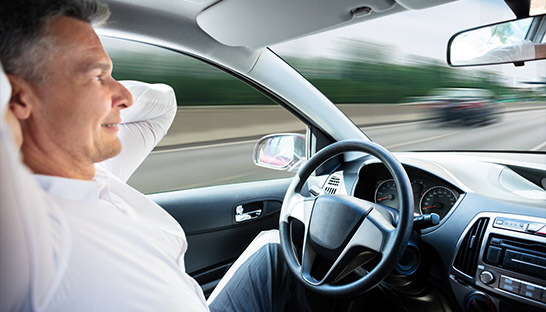The automotive industry, a pillar of global economic growth, is undergoing transformative changes. These shifts are driven by technological innovation, regulatory changes, and evolving consumer preferences. As the industry navigates through this era of disruption, key trends are emerging that will shape the future of transportation.

The Electric Vehicle Revolution: A New Dawn
The shift towards electric vehicles (EVs) is no longer a distant future; it’s happening now. The global push for sustainability, coupled with stringent emissions regulations, has accelerated the adoption of EVs. Traditional automakers are transitioning their production lines, while new players are entering the market with innovative models.
The Role of Legacy Automakers
Legacy automakers like General Motors, Ford, and Volkswagen are not just dipping their toes into the electric pool; they are diving in headfirst. Volkswagen, for instance, has announced ambitious plans to phase out internal combustion engines (ICE) by 2035. Ford is similarly committed, with its F-150 Lightning, an electric variant of its best-selling truck, marking a significant milestone in EV adoption.
The Rise of New Entrants
Meanwhile, companies like Tesla continue to dominate the EV market, setting benchmarks for range, performance, and technology. However, new entrants such as Rivian, Lucid Motors, and Chinese giant Nio are challenging the status quo. Rivian’s R1T, an electric adventure vehicle, has garnered widespread attention, while Lucid’s Air is poised to compete directly with Tesla’s Model S.
Autonomous Vehicles: The Next Frontier
While electric vehicles are garnering headlines, autonomous vehicles (AVs) are quietly revolutionizing the industry. AV technology promises to redefine mobility, making transportation safer, more efficient, and accessible.
The Path to Full Autonomy
The journey to full autonomy is complex and fraught with challenges. Companies like Waymo, Cruise, and Tesla are at the forefront, with varying approaches to achieving Level 5 autonomy—the stage where a vehicle can operate without any human intervention. Tesla’s Full Self-Driving (FSD) system, though still in its beta phase, is a significant step towards this goal. However, achieving regulatory approval and public trust remains a considerable hurdle.
The Impact on Urban Mobility
Autonomous vehicles have the potential to drastically alter urban landscapes. The rise of robotaxis, for example, could reduce the need for personal vehicle ownership, leading to less congestion and lower emissions in cities. Moreover, AVs could provide enhanced mobility for the elderly and disabled, fostering greater inclusivity.
Sustainability: Beyond Electric Vehicles
While electric vehicles are a crucial component of the sustainability narrative, the industry’s environmental impact extends beyond the tailpipe. Automakers are now focusing on sustainable manufacturing practices, circular economy principles, and the reduction of their overall carbon footprint.
Green Manufacturing
Automakers are increasingly adopting green manufacturing techniques. BMW’s plant in Spartanburg, South Carolina, is a prime example, utilizing renewable energy sources and recycling programs to minimize waste. Similarly, Volvo aims to be a climate-neutral company by 2040, with plans to reduce carbon emissions across its entire supply chain.
The Circular Economy
The circular economy is gaining traction in the automotive sector, emphasizing the importance of recycling and reusing materials. Companies like Renault are pioneering in this area with their Re-Factory in France, which is dedicated to refurbishing and recycling vehicles. This approach not only reduces waste but also extends the life cycle of vehicles and their components.
Regulatory Challenges and Market Dynamics
The automotive industry is heavily influenced by regulatory frameworks and market dynamics. Governments worldwide are implementing policies to promote cleaner transportation, but these regulations also present challenges for automakers.
Stricter Emissions Standards
Stricter emissions standards are compelling automakers to innovate. The European Union’s Euro 7 standards, set to be implemented by 2025, will impose even lower limits on pollutant emissions from vehicles. In the United States, the Biden administration is pushing for aggressive fuel efficiency standards, aiming to reduce greenhouse gas emissions significantly.
The Global Semiconductor Shortage
The global semiconductor shortage has exposed vulnerabilities in the automotive supply chain. Semiconductors, critical components in modern vehicles, are in short supply due to disruptions caused by the COVID-19 pandemic. This shortage has led to production delays and has forced automakers to prioritize certain models over others.
The Future of Mobility: An Interconnected Ecosystem
As the automotive industry evolves, the future of mobility is becoming an interconnected ecosystem, blending electric, autonomous, and shared transportation modes. This ecosystem will be underpinned by digital technologies, from advanced driver-assistance systems (ADAS) to vehicle-to-everything (V2X) communication.
The Role of Data and Connectivity
Data and connectivity will play a pivotal role in this new ecosystem. Vehicles are increasingly becoming connected devices, capable of communicating with each other and with infrastructure. This connectivity will enable smarter traffic management, reduce accidents, and improve overall efficiency.
Shared Mobility and the Subscription Model
Shared mobility is another key component of the future landscape. Ride-hailing services, car-sharing platforms, and subscription-based ownership models are gaining popularity, particularly in urban areas. These models offer flexibility and convenience, appealing to younger consumers who prioritize access over ownership.
Conclusion: Navigating the Road Ahead
The automotive industry is at a crossroads, facing both challenges and opportunities. As it adapts to new technologies, regulatory pressures, and shifting consumer demands, the industry will continue to evolve. Those who embrace change and innovate will thrive in this dynamic environment, shaping the future of mobility for generations to come.